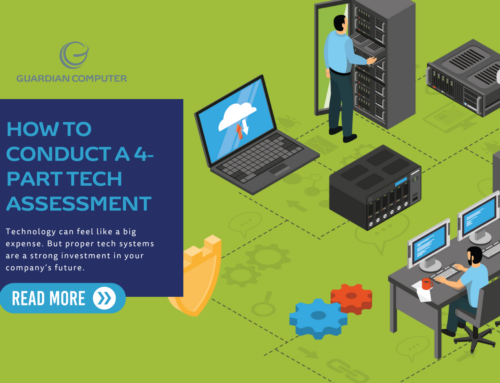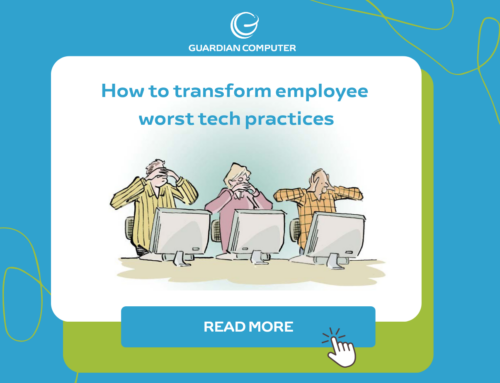Cyber criminals have started targeting a new demographic within recent years: travelers. When preparing for a trip, cyber security is probably the last thing on your mind. However, not taking cyber security into account while traveling puts both vacationers and business travelers at a higher risk for a cyber attack while away from home.
Whether you find yourself waiting at an airport, working from a hotel room, or taking a road trip with your family, you should always consider the best cyber security practices for travelers. Ready to bring cyber security to the forefront of your travel plans? Follow our expert tips to help protect your data and digital devices while away from home.
Cyber Security Risks for Travelers
When people travel, they often think about everything but cyber security. You have to pack, make arrangements for house sitting, and plan for transportation, lodging, meals, activities, and more. But why isn’t device security also a top priority for travelers?
Traveling puts you in an unfamiliar environment where you often have less control over your surroundings, including your digital environment. You’re busy and distracted, and it’s easier to do what’s most convenient, even if it’s not as safe.
Not only do travelers often engage in risky behaviors, such as connecting to public Wi-Fi, but they also keep a huge amount of valuable data close at hand. Most people carry their smartphones with them wherever they go, and laptops are a necessity for today’s traveling business professionals. Travelers also often carry passports, credit card information, lodging details, and more.
Cyber criminals are taking advantage of these circumstances. Transportation was the second-highest industry for cyber attacks, according to the 2019 IBM X-Force Threat Intelligence Index.
5 Best Cyber Security Practices for Travelers
The key to maintaining cyber security is to be vigilant about both the physical and digital safety of your devices, whether you’re at home or away. With a little effort and planning, you can follow these 5 best cyber security practices for travelers.
1. Be Cautious of Public Wi-Fi
The easiest way to keep from getting hacked is to limit public access to your phone. By simply not tapping into a public Wi-Fi network, you become the first line of defense to your own resources.
While public Wi-Fi is convenient and appealing for most travelers, these networks can put users at a higher risk for a cyber attack. Be vigilant when sleuthing out an encrypted network. Don’t shy away from asking hotel management questions about their cyber security in place for guest users.
Even private Wi-Fi networks hosted by hotels and other hotspots for travelers are susceptible to cyber attacks, since hackers know that there will be many people there. Hotel News Now reports that the Marriott International and the Drury Hotel were among the many establishments to suffer a data breach in the last two years. Millions of people had their contact information and credit card numbers stolen as a result.
Take precautions when accessing any networks while you’re away from home. If you decide to use public Wi-Fi, avoid logging into personal accounts that contain private data or accessing sensitive company information. If possible, always use public Wi-Fi with a VPN for added security.
2. Keep Your Tech Locked Up
One of the best cyber security practices for travelers is actually one of the easiest: lock up your tech! This advice considers two key parts of your tech’s security: its physical safety and its digital safety.
Physical Safety for Devices
Make sure all of your devices are securely fastened within your luggage. Be wary of slipping your phone into a side pocket, as it’s easy for someone to reach in and grab it. While you want to be able to access your devices easily, you don’t want to put them at risk for theft or unauthorized use.
Consider placing any phones, tablets, or laptops in zipper-close, opaque pockets and purchasing a backpack lock. An electronic organizer could be beneficial for keeping all of your electronic devices in one place and keeping you from digging through your luggage in a pinch.
Digital Safety for Devices
You also need to digitally limit an unknown user’s access to your devices. A vital step in protecting your privacy is to have some form of authentication for each device, if not two-factor authentication for even greater security.
Luckily, cellphones and computers typically have built-in authentication programs. These include Apple’s Touch ID feature, as well as the facial recognition features available on iPhones and some Android devices.
Even if your devices don’t have these specific features, there are several options for digital protection. Set an alphabetic, numeric, or patterned code to limit the access to your phone or tablet. Always create strong passwords for your computers and digital accounts.
Password Tips
Here are a few tips to help you come up with stronger passwords:
- The longer, the better. A lengthy password can better protect your device or account. If possible, the ideal password will be at least 15 characters.
- Use a mixture of characters. Try using a combination of lowercase and uppercase letters, numbers, and symbols. Some devices or accounts require you only use certain special characters, so keep these rules in mind.
- Don’t go the easy route. Avoid commonly used phrases, recognizable words, or any personally identifying information, such as your birthday or child’s name. Most hackers can do a quick social media search to find this information and play the guessing game when it comes to figuring out your password.
- Consider using a password generator. This will contribute to the randomness of the password, making it more difficult to crack. Password managers often include password generator features, while also giving you a place to securely store these hard-to-remember passwords.
3. Disable Risky Features
Several of the features that may help you at home carry different risks on the road. As such, one of the best cyber security practices for travelers involves disabling these risky features during trips.
Auto Connect
Even if you decide to use public Wi-Fi, make sure you disable the auto connect capabilities on your devices. While auto connect is a convenient feature when using the internet at your house, it’s good practice to require a manual connection whenever a device has access to public Wi-Fi. This gives you the opportunity to investigate a public network before choosing whether or not to connect to it.
Bluetooth Connectivity
Most devices have Bluetooth capabilities, yet many users are unfamiliar with exactly how Bluetooth works. While you’re thinking the Bluetooth feature is a great way to connect all of your devices together, a hacker sees it as an entryway into your phone or computer. Similar to the auto connect feature, Bluetooth connectivity is perfectly fine when you’re using all of your devices at home. However, when you’re traveling, it’s best to consider limiting Bluetooth usage and turn it off when not in use.
Location Sharing
It’s understandable that you may want your loved ones to keep tabs on you while you’re traveling. Maybe you just want to give your family and friends a peek into your on-the-road adventure. Although it is becoming commonplace to share your location through your phone or computer, it might not be the best cyber security practice while traveling.
Weigh the costs when sharing your location. This feature opens you up not only for a cyber attack, but also a physical one. Criminals can get information on where you are and where your hotel room is, leaving you vulnerable to theft or a physical attack. Limiting the amount of location sharing you do while traveling is an important step to keeping you and your belongings safe.
4. Install Antivirus Protection
This may seem like an obvious suggestion, but it can be all too easy to overlook in the hustle and bustle of preparing for a trip. Antivirus software is an added layer of defense that helps protect your device at all times, even while you’re away from home.
Evaluate the most powerful antivirus softwares on the market when making your decision. If you’ll be bringing work devices on a trip, check in with your company about providing antivirus software. Keep your devices up to date with the latest features from their antivirus software, and install any updates before leaving home.
5. Update Device Software Before You Go
No matter if you’re bringing a smartphone, tablet, or laptop, you want to keep the most current version of your software updated before heading out for your trip. Some devices are programmed to update once connected to a Wi-Fi network, which means your device would try to download new software the moment you connect to a public network outside of your home.
First, if possible, disable this feature to prevent any software updates over a public connection. This allows you to maintain more control over your device and prevent unwanted access. Next, install new versions of software at home before you leave for your trip.
If you are unable to do this, stop any software downloads before they start and wait until you return home to complete installation. A word of caution: not installing the most recent version of software onto your device might cause performance issues until the device is updated. You want your time away from home to be easy and effortless, and an update could strongly improve your experience with your devices.
Get the Best Cyber Security Anywhere with Guardian Computer
Whether your business needs IT services on premises or for remote workers, Guardian Computer is here to help. From cyber security to network configuration, cloud management, regulatory compliance, help desk support, and much more, our experts are available for one-off projects as well as ongoing management, maintenance, and support.
Get in touch with us today to learn more about the advanced protection, strategic digital transformation, and friendly IT support we provide.







